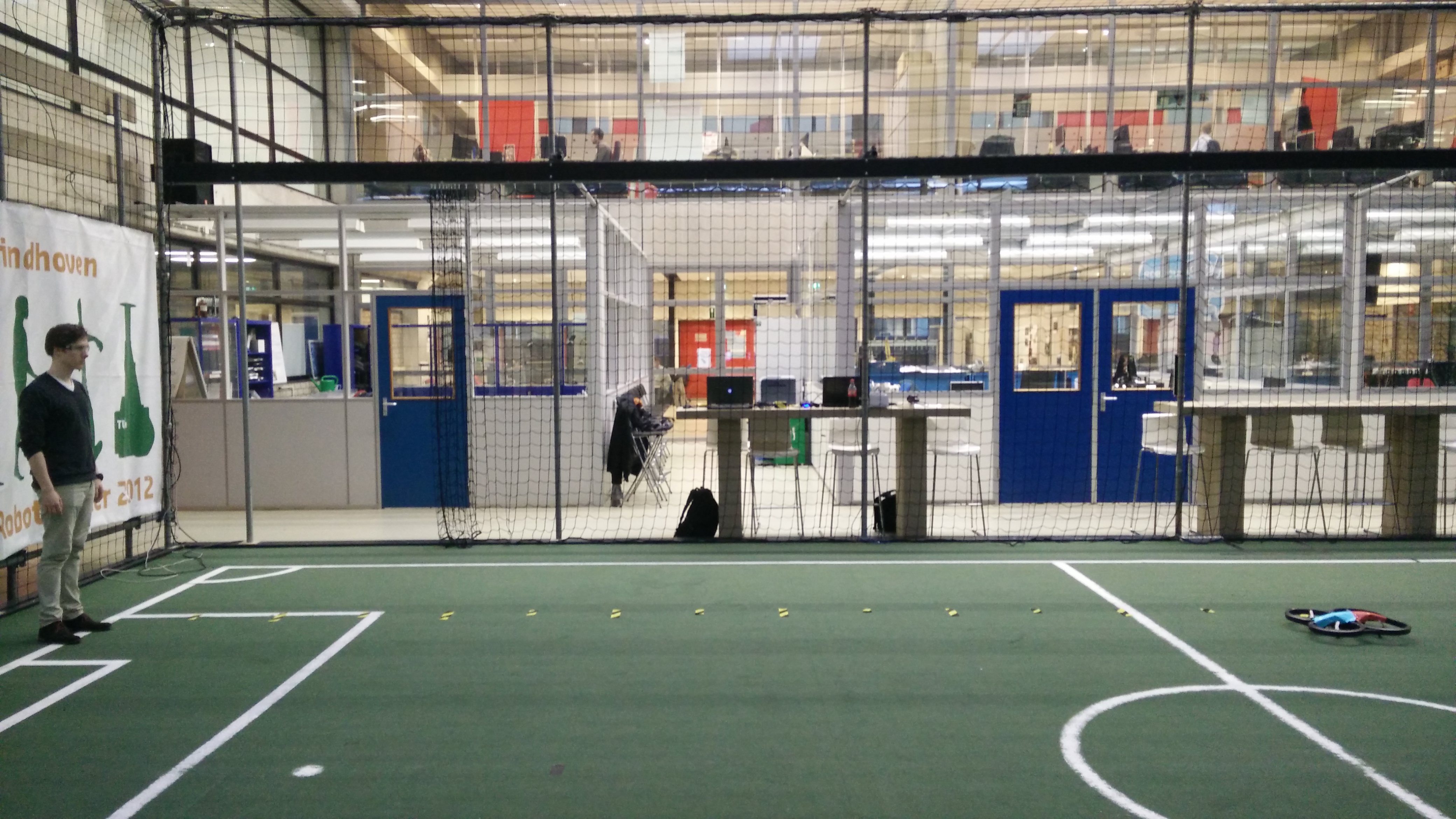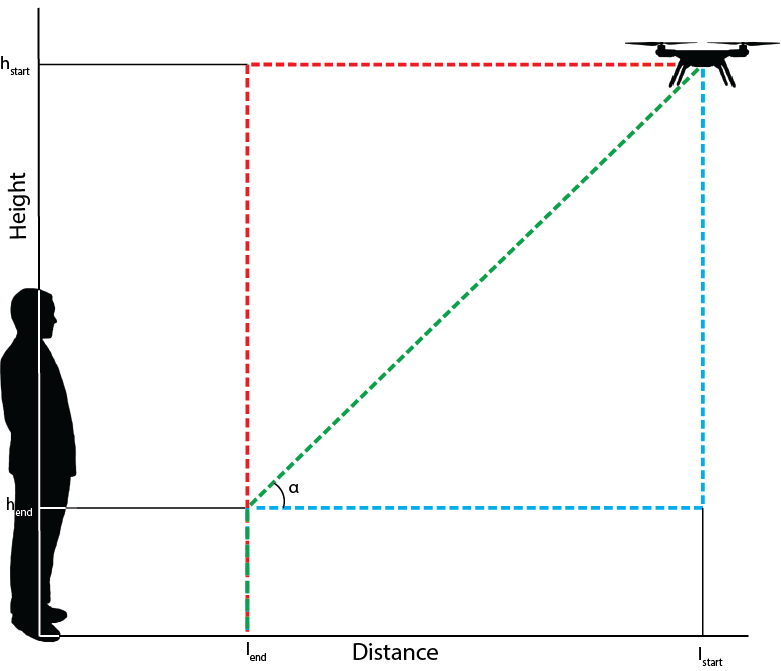PRE2015 3 Groep2 week5: Difference between revisions
(Created page with '== Approaching Users == === Experiment 1: Landing distance === [[File:Opstelling.jpg|thumbnail|upright=2.5|Figure 1: Foto of the first experiment for determining the landing dist…') |
|||
| Line 48: | Line 48: | ||
The mean value of the optimal distance is . | The mean value of the optimal distance is 2.47m with an standard deviation of 0.67. The nearest distance has a mean of 1.00m with an standard deviation of 0.53m. These means give the landing distance from this experiment, the optimal landing distance is 2.5m with a nearest landing distance of 1.0m. The drone should be programmed to keep these distances as first option and starting point of the landing procedure. | ||
=== Experiment 2: Way of approach === | === Experiment 2: Way of approach === | ||
Revision as of 10:02, 7 March 2016
Approaching Users
Experiment 1: Landing distance
The variable landing distance is about the distance that users are still comfortable with the drone around. The optimal distance that users like and the nearest distance that people are comfortable with drones around are determined with an experiment. The subject (an user) stands on a given spot (l=0). The distances 1, 2, 3…7 meters are marked with masking tape (distance to test subject) on the ground. The drone will start at a distance of 7 meters (= lstart) as seen in figure 1. The drone will approach the person at a steady speed of approximately v = 1 m/s. It does so at a height of h = 1 meter. Whenever the test subject feels like the current distance between him and the drone is the most comfortable distance to land, the test subject will give off a sign and the drone will be given the order to land (lend). The subject will redo the test to determine the nearest distance where he or she feels comfortable. Those distances are measured and rounded per 0.25m. The results are seen below.
| Experiment | Optimal distance (m) | Nearest distance (m) |
|---|---|---|
| 1 | 2.25 | 1.0 |
| 2 | 2.75 | 0.75 |
| 3 | 2.5 | 1.0 |
| 4 | 2.25 | 0.75 |
| 5 | 2.0 | 0.75 |
| 6 | 1.75 | 0.5 |
| 7 | 3.5 | 2.0 |
| 8 | 3.5 | 1.75 |
| 9 | 1.75 | 0.5 |
The mean value of the optimal distance is 2.47m with an standard deviation of 0.67. The nearest distance has a mean of 1.00m with an standard deviation of 0.53m. These means give the landing distance from this experiment, the optimal landing distance is 2.5m with a nearest landing distance of 1.0m. The drone should be programmed to keep these distances as first option and starting point of the landing procedure.
Experiment 2: Way of approach
It's not online interesting to look at the best landing distance, but also at the way the drone approaches the user.For this, a distinction is made between three different situations. For a description of these situation see the list below and figure 2. In all these situations the test person is positioned at l = 0. The drone starts at a distance lstart and height hstart.
- Situation A
- The drone flies horizontally to a certain distance lend then the drone lands vertically.
- Situation B
- The drone flies diagonally, at an angle α, to a certain point at distance lend and height hend. Then the drone lands vertically.
- Situation C
- The drones lowers itself vertically to a certain height hend. It then flies horizontally to a certain distance lend before it lands vertically on the ground.
During the experiment the three situation will get different values for the distance lstart and lend. These distances will be 6, 4 and 2 meters. Note that the drone will never fly away from the test person. So when the distance lstart equals 4 meters, only the values of 4 and 2 meter will be used for lend.
After each test variation the test person is asked to rate the experience with the values very bad/bad/neutral/good/very good.

